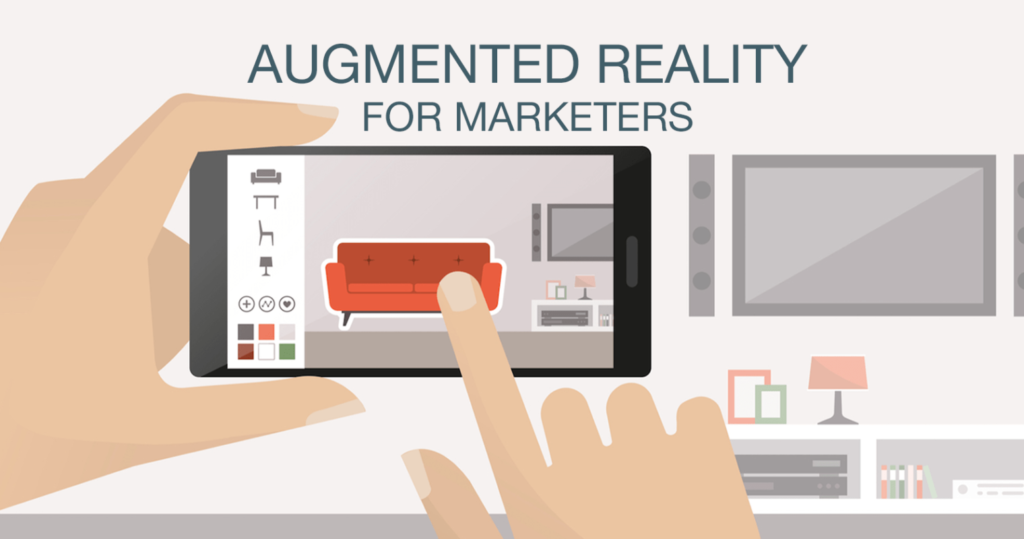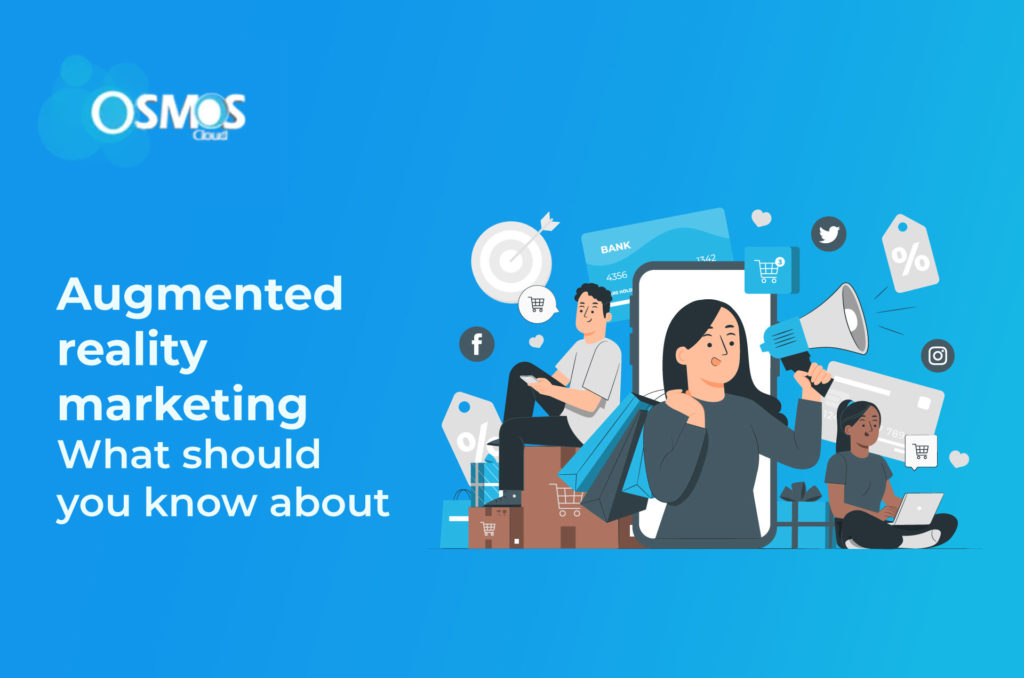Augmented reality (AR) marketing can be a powerful tool for businesses looking to engage their customers in a new and innovative way. Learn about AR technology, the best practices for implementing it for marketing purposes, and how to get started today!
Augmented reality (AR) marketing is changing how businesses interact with customers. With AR, companies can create unique and engaging experiences for their target audiences that can significantly increase brand recognition, engagement, and sales.
There are various ways to use AR in marketing, including games, virtual showrooms, and interactive ads. As with any technology-driven approach, it’s essential to understand the basics of AR and how best to leverage it for success. With the right strategies and tactics, companies can unlock their full potential and capitalize on the immense opportunities they present. With thoughtful use of AR in marketing, businesses can create more meaningful and engaging customer experiences that will help them stand out from their competitors.
Overview of Augmented Reality
Augmented reality (AR) marketing is revolutionizing how businesses reach customers. By combining virtual content and real-world environments, AR has enabled marketers to create engaging experiences that promote products, services, and brands in a completely new way. This article will discuss what marketers need to know about AR marketing and how it can be used effectively.

What Is Augmented Reality Marketing?
Augmented Reality (AR) marketing is an innovative form of advertising that combines aspects of both the digital and physical worlds. It uses sophisticated technologies such as 3D modeling, computer vision, and tracking to blend virtual elements with real-world environments. Augmented reality marketing offers users a unique and immersive experience by creating interactive visuals that can be tailored to their needs.
With AR, marketers can create virtual products, offer immersive experiences and engage audiences in real-time. Businesses can also use it to provide valuable insights into customer behavior or enhance the user experience of a product or service. The possibilities are endless and will only continue to grow as technology evolves. As such, it presents an exciting opportunity for companies to create engaging and innovative marketing campaigns.
Benefits of Augmented Reality Marketing
Augmented Reality Marketing (ARM) has emerged as an effective tool to boost customer engagement. It offers marketers a dynamic way to promote their products and services by combining traditional marketing strategies with interactive digital elements. Here are some of the key benefits of using ARM:
1. Enhanced Engagement
By providing an interactive, immersive experience with its augmented reality components, ARM can help marketers capture customer attention and keep them engaged for longer periods. This increased level of engagement can lead to better brand recall and higher customer satisfaction.
2. Cost Savings
Compared to traditional marketing techniques, ARM can help marketers save costs. This is because augmented reality technology does not require a significant upfront investment and can be implemented for a fraction of the cost of other marketing initiatives.
3. Increased Reach
With an ARM, marketers have access to larger audiences as they can reach out to customers from different locations and demographics. This increased reach allows them to target potential customers and increase their overall market share.
4. Improved Brand Loyalty
ARM encourages customers to interact with the brand on a deeper level, which can help build loyalty and trust in the long run. By providing an engaging experience, ARM increases customer engagement and helps create positive associations with the brand.
5. Measurable Results
ARM provides marketers with valuable data on customer engagement and behavior, which helps them track their campaigns’ effectiveness and make informed decisions about future marketing efforts.
Overall, ARM offers a range of benefits for marketers looking to maximize the impact of their campaigns. By leveraging the capabilities of AR technology, marketers can create engaging experiences that drive customer engagement and loyalty.
How To Use Augmented Reality Marketing?
Augmented reality (AR) marketing is a powerful tool for companies to create immersive and engaging customer experiences. This technology has the potential to revolutionize how brands reach their target audience, allowing them to create unique campaigns that stand out from the competition.
By using AR, marketers can provide an interactive experience for their customers and make products more accessible.
Creating An AR Experience
The first step to using AR marketing is creating an engaging experience. This can be done by utilizing 3D models, animations, and interactive elements to create a virtual environment that customers can explore. Companies should also consider how they want their customers to interact with the experience. For example, this could involve providing interactive elements such as buttons, menus, and mini-games.
Integrating AR Into Your Marketing Strategies
Once you have an engaging experience built out, it’s time to start integrating it into your marketing strategies. This could involve advertising the experience on your website or social media pages. You can also leverage influencers to help spread the word about your AR experience and reach more potential customers.
Measuring Results
Finally, measuring the results of your AR marketing campaigns is essential. You can understand what worked and didn’t by tracking how many people interacted with the experience and how long they stayed engaged. Additionally, you can use analytics to gain insights into customer behavior and determine which elements of the experience were most effective.
By using AR marketing, companies can create unique experiences that engage their target audiences more. With careful planning and execution, businesses can unlock the potential of this technology to reach new customers, boost customer engagement, and increase sales.
5 Ways To Succeed In AR Marketing
AR marketing is an incredibly powerful tool for businesses today. It can help engage customers, create unforgettable experiences, and drive sales. To make the most of this technology, however, companies need to know how to use it effectively. Here are five tips for success in AR marketing:
1. Utilize Interactivity
Interactivity is one of the critical elements of successful AR marketing. By using this feature, businesses can create engaging experiences that will draw customers in and keep them returning for more. Developing interactive elements like quizzes, games, or virtual tours can significantly impact customer engagement and drive sales.
2. Focus on Quality
Quality is critical when it comes to AR marketing. Low-quality content or visuals can quickly turn customers away, so businesses should focus on creating high-quality AR experiences that will leave a lasting impression. Ensure the visuals are sharp and clear, the audio is crisp, and any interactivity features are responsive and user-friendly.
3. Incorporate Social Sharing
AR marketing offers an excellent opportunity to incorporate social sharing. Businesses can quickly reach a wider audience by allowing customers to share their AR experiences with their friends and followers. This feature also creates an “amplification loop,” where each user’s experience reaches more people, resulting in exponential growth in customer engagement.
4. Incorporate a Call-To-Action
AR marketing can also be used to drive customers to take action. Including a call-to-action at the end of the AR experience, such as signing up for an email list or visiting a product page on your website, is an effective way to increase engagement and conversions.
5. Track Your Results
Finally, businesses should track the results of their AR marketing efforts to ensure they are achieving their desired goals. By keeping an eye on user engagement, time spent in the experience, and any other relevant metrics, companies can measure their campaigns’ success and adjust accordingly.
By following these five tips, businesses can make the most of their AR marketing efforts and maximize their return on investment. With interactive features, high-quality visuals, social sharing capabilities, calls-to-action, and tracking results, companies can create powerful experiences that will engage customers and drive sales.
Future of Augmented Reality Marketing
Augmented reality (AR) marketing has been gaining attention as a potential game changer for businesses. This technology allows marketers to create immersive experiences that engage customers in ways never before possible.
With its ability to bridge the physical and digital worlds, AR can build more meaningful connections with customers, drive sales, and create unique customer experiences.
Immersive Experiences
AR enables businesses to create immersive and interactive customer experiences that are both engaging and memorable. Companies can use AR to provide customers with a virtual tour of their store, allowing them to explore products and services without being physically present in the store.
This technology also allows customers to visualize how certain products, such as furniture, would look in their homes before they make a purchase. AR also allows marketers to create interactive campaigns that engage customers by allowing them to interact with brand messaging and stories.
Drive Sales and Increase Reach
AR offers the potential for businesses to reach more customers and increase sales. By leveraging AR technology, companies can create experiences that allow customers to try out products virtually, ultimately driving more conversions. Additionally, AR campaigns can increase customer engagement and reach new audiences through social media.
Unique Customer Experiences
AR allows businesses to create unique customer experiences tailored specifically to their product or service. For example, companies can use AR technology to provide customers with product info or virtual instruction manuals demonstrating how to use their product. In addition, AR can be used to create interactive and immersive content, such as games that customers can play with a company’s products.
As the technology continues to evolve and become more widely available, businesses can leverage AR marketing to drive sales and create unique customer experiences. AR marketing has the potential to revolutionize how businesses engage with customers, allowing them to build more meaningful relationships and create immersive experiences that engage customers in new and exciting ways.







